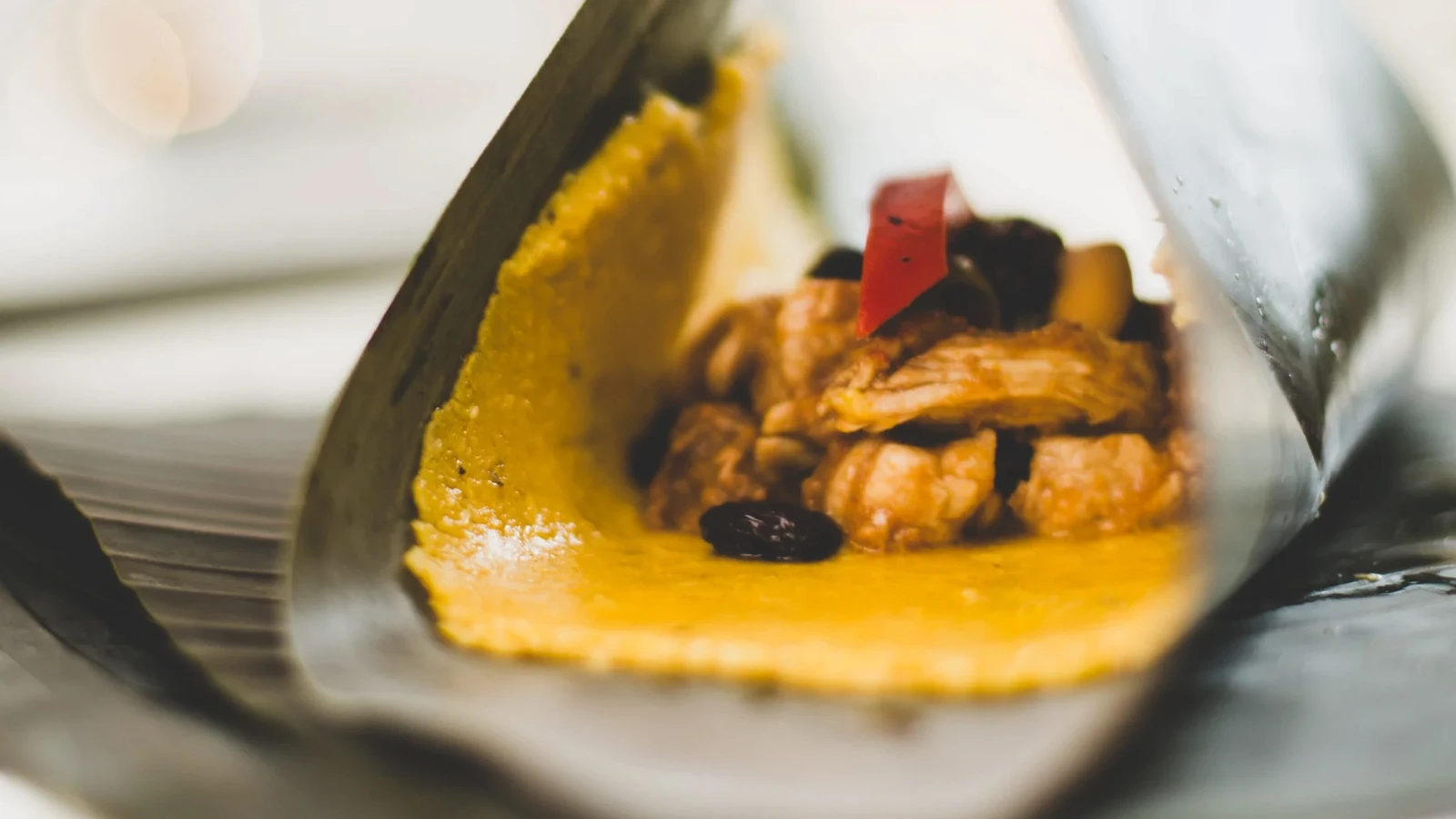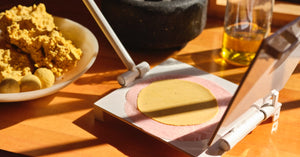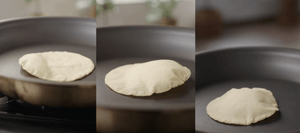Masa Shapes: How to Make Hallacas with Mercedes Golip
Masa Shapes: How to Make Hallacas with Mercedes Golip

December 13, 2021
This recipe and content has been provided by friend and fellow masaphile, Mercedes Golip. Photos by Patrick Dolande.
The hallaca is corn masa tamal-like preparation filled with a stew (guiso), traditionally made of beef, chicken and pork; and garnishes that vary per region and even family recipes. The whole preparation is wrapped in a piece of banana leaf and tied with twine to then be steamed or boiled.
The hallaca preparation is a family tradition. An assembly line of friends and family that gather to cook, catch up and leave issues behind; while listening to music, having some wine or rum and picking a chore. Growing up I was in charge of the garnishes, my little 10 year old hands were tasked to assemble dozens of trays where I would carefully pile up: two raw onion rings, a julienne of red bell pepper, ten raisins, two olives, two almonds and six capers — almost in a meditative state of mind.
There is no right or wrong recipe to make hallacas, every family takes pride on their own and most times it’s a well guarded secret. The quality of the masa can make it or break it. Its consistency and texture are key — too hard and the end result will be dry and grainy, too wet and it will fall apart. The masa is made with cooked white corn or white corn flour, broth, annatto oil, salt and some recipes also include lard. Once everything is mixed together and you get the right consistency it’s important to try it, it should be a bit salty because some of that flavor will be lost in the boiling water.
To me, hallacas have meant different things throughout these years that I have been far from Venezuela. First, they were a way to cope with the distance and everything I was missing out on when I left everything behind, especially at this time of the year. It has become a dish I make with pride, local ingredients and a Venezuelan soul.



